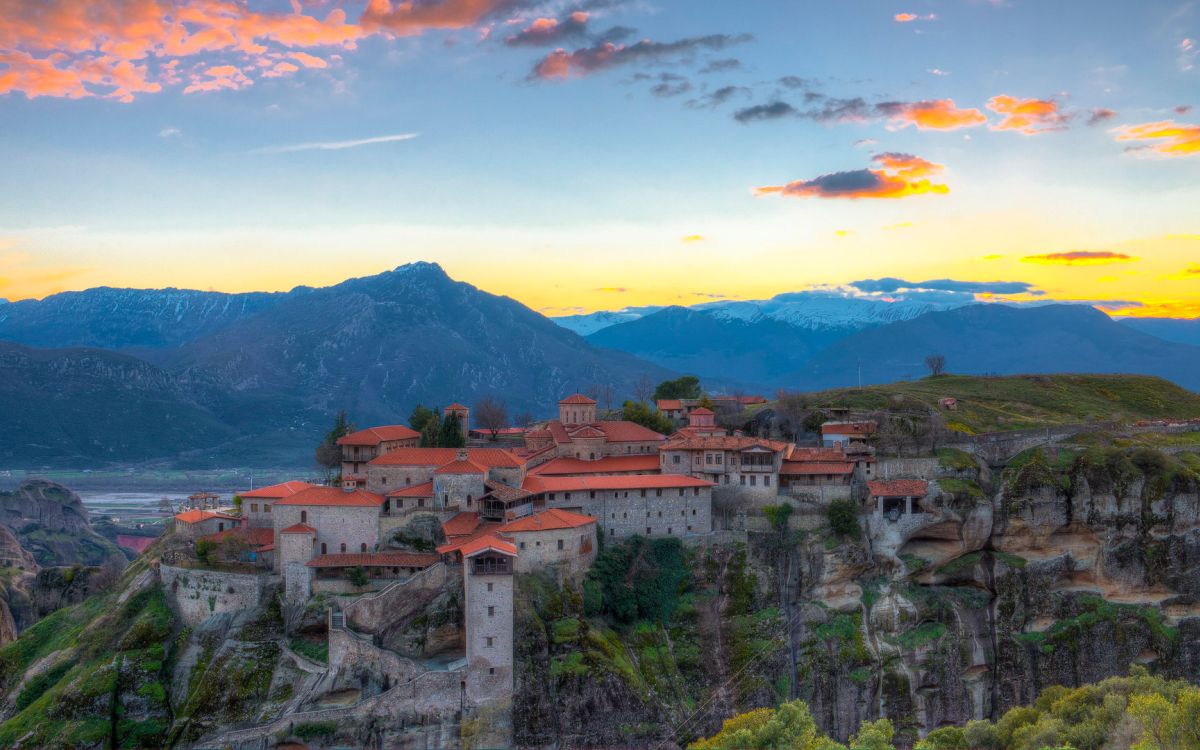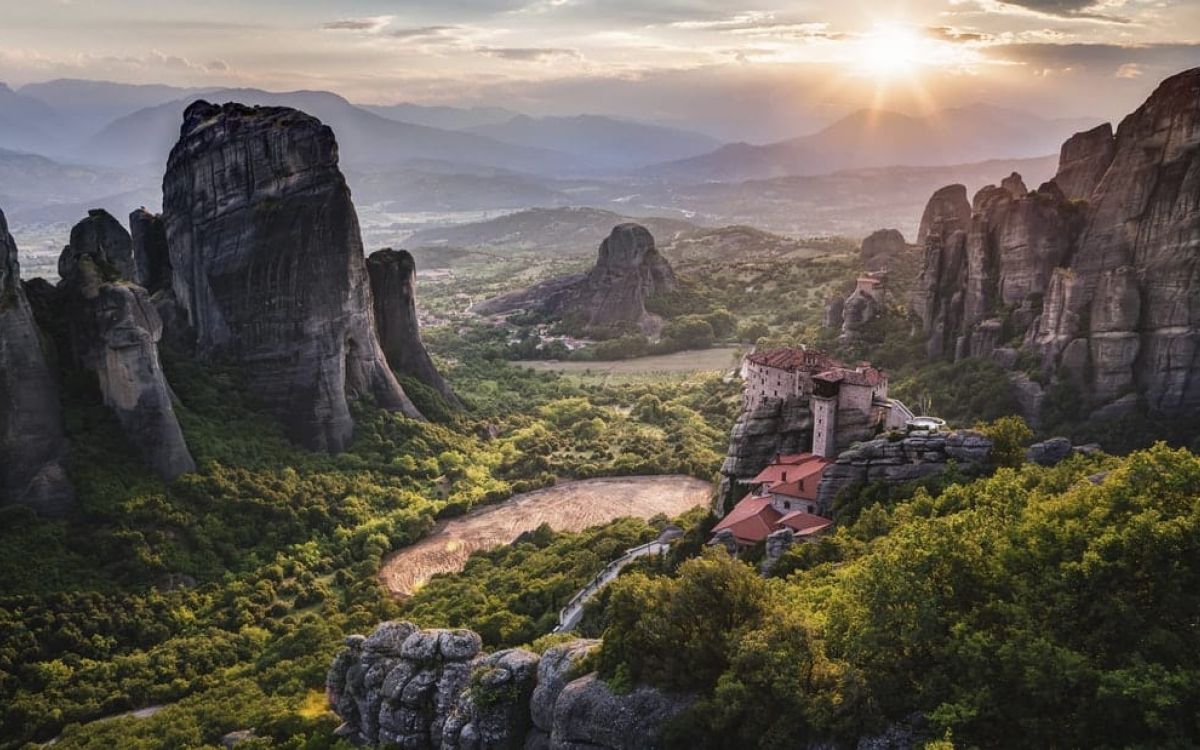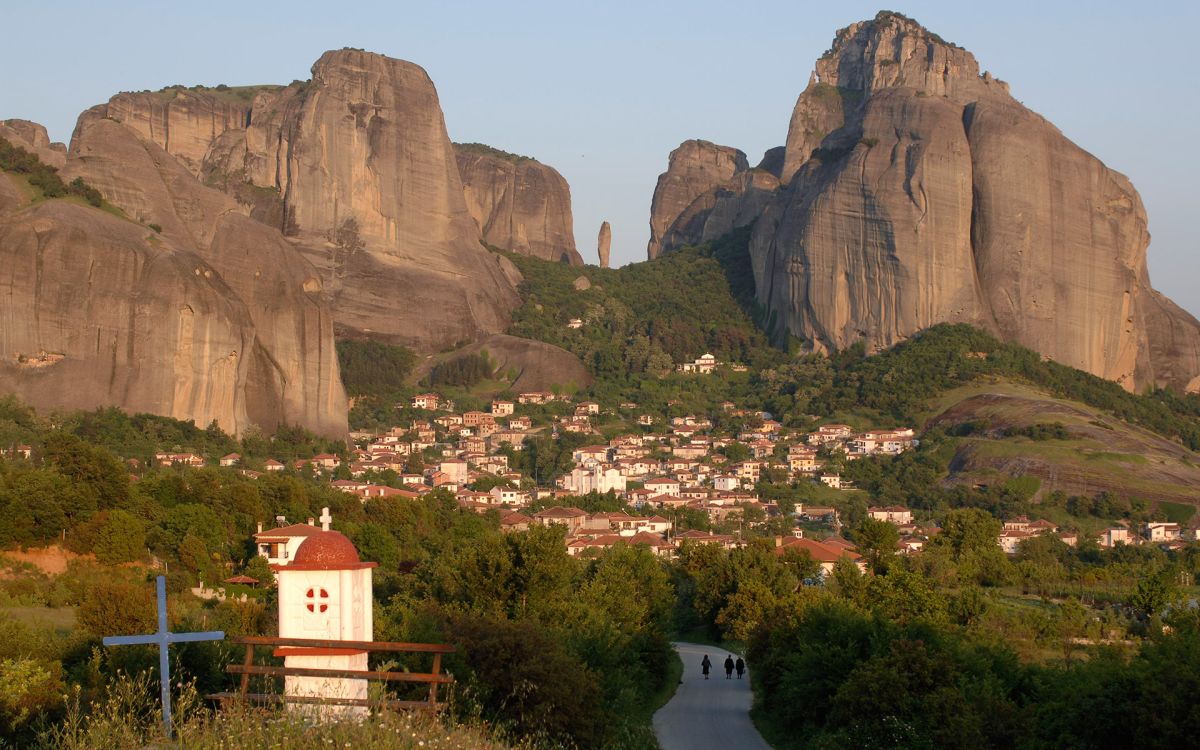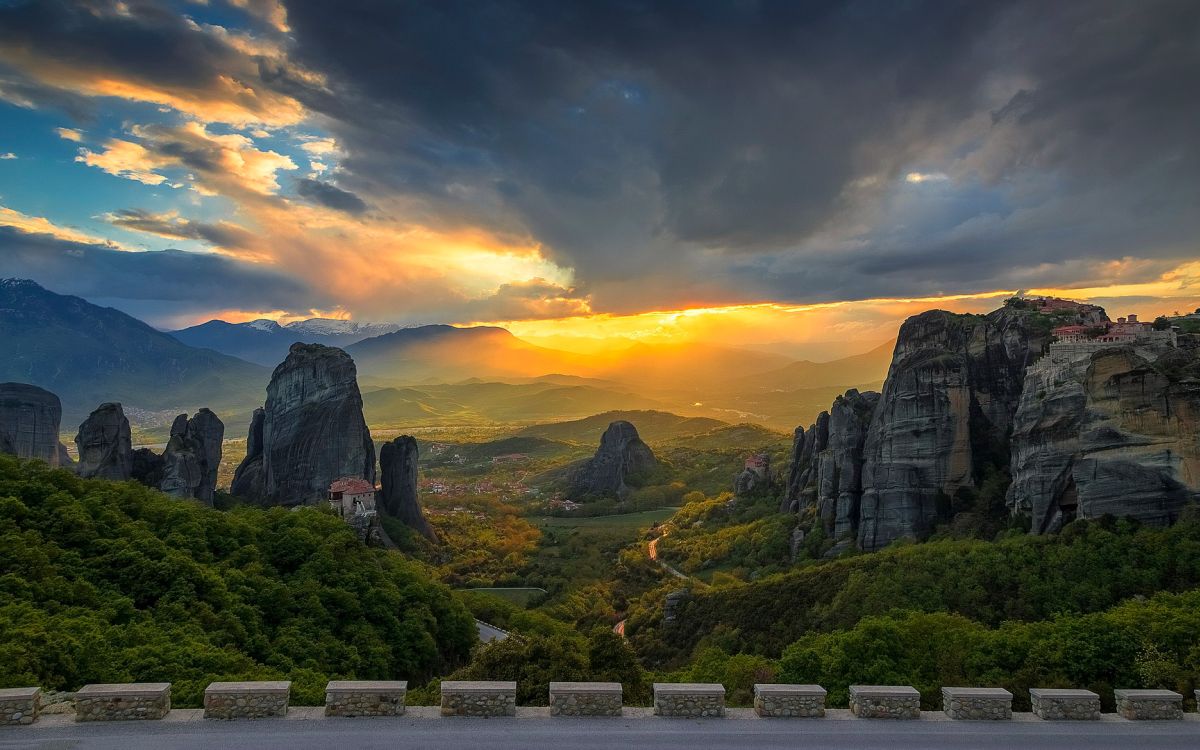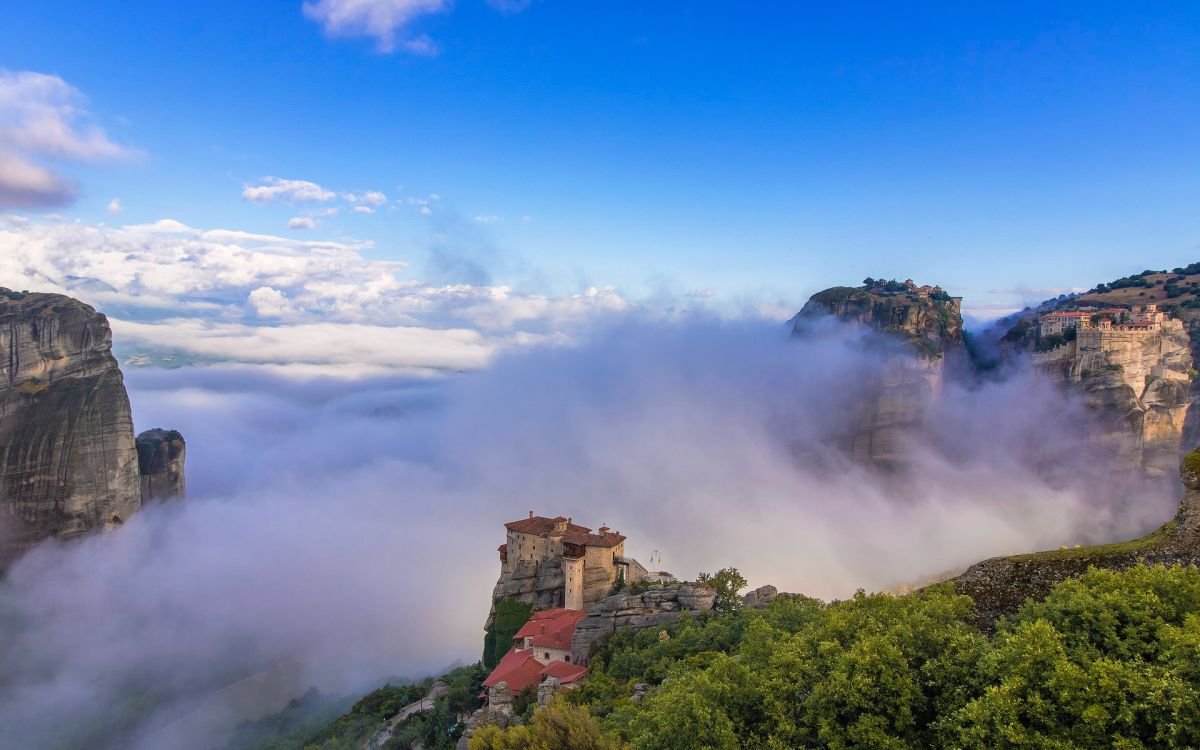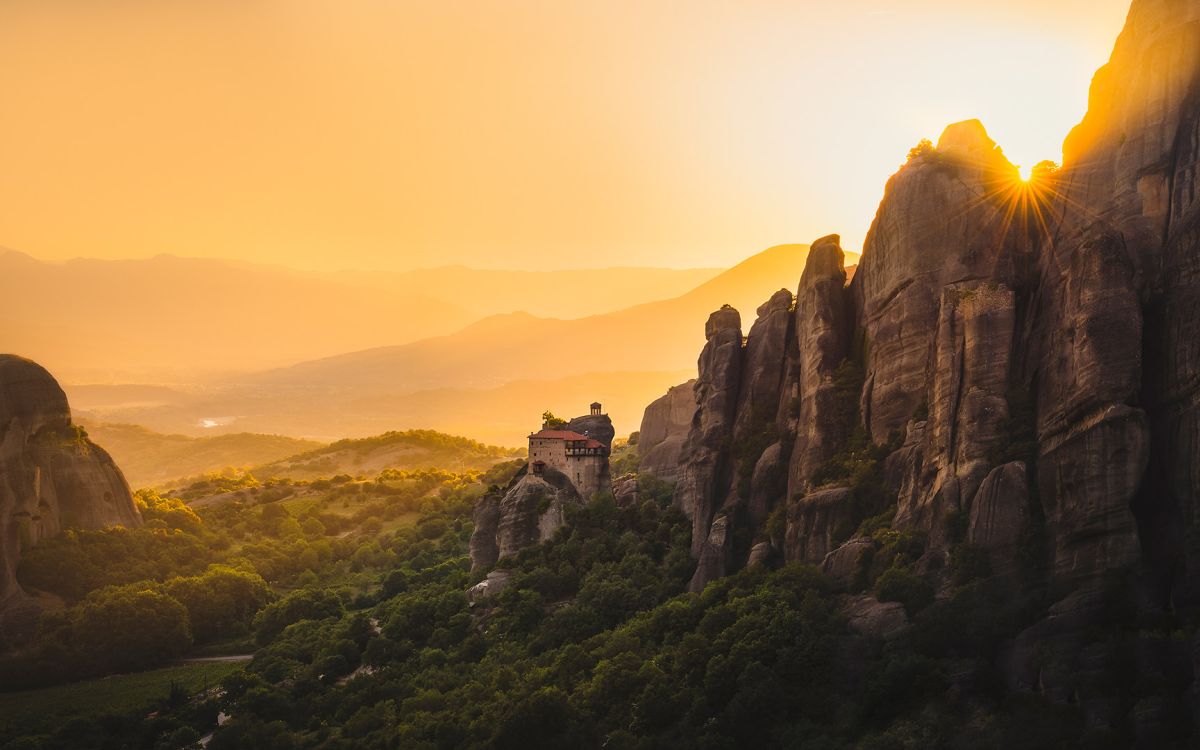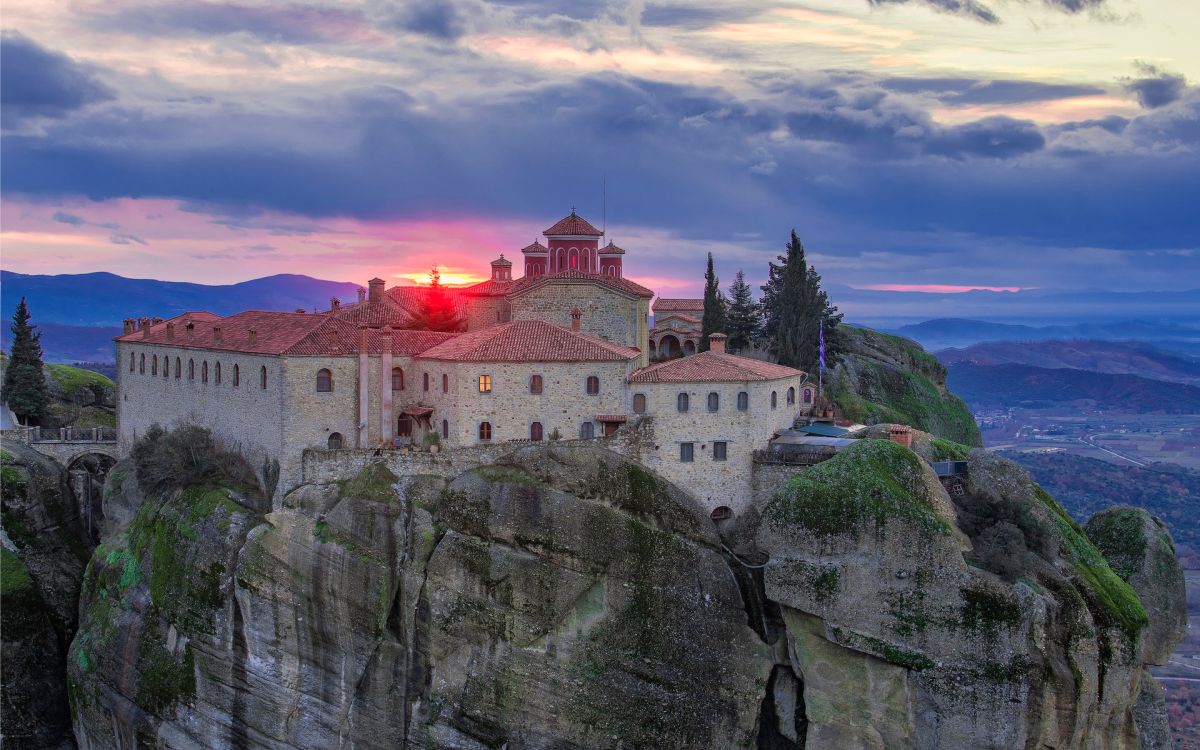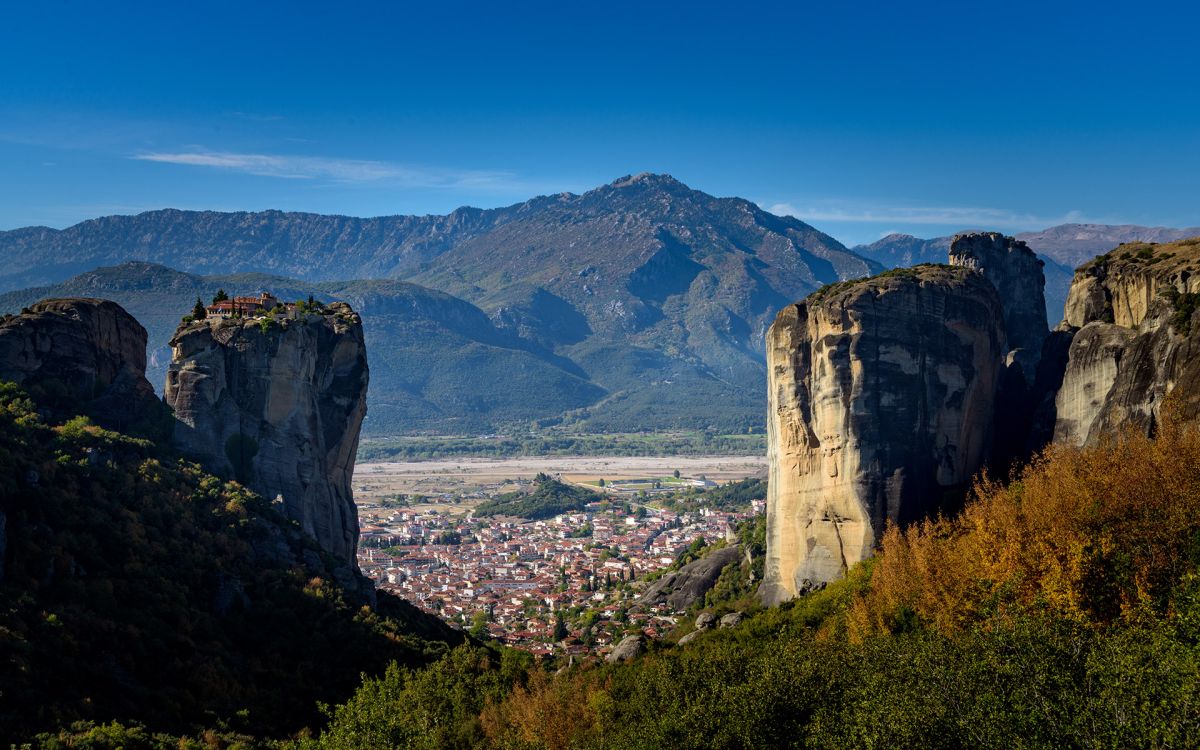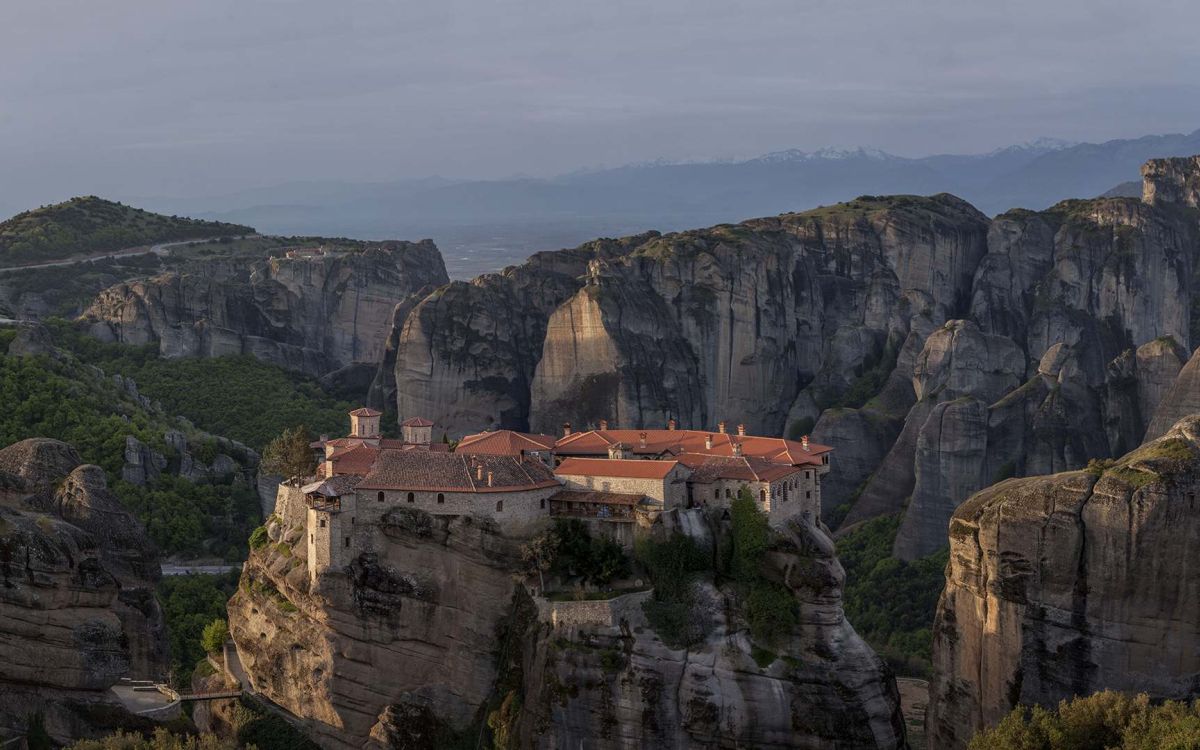The Meteora vertical cliffs a amazing UNESCO World Heritage site
The Meteora vertical cliffs and the
Twenty-four monasteries
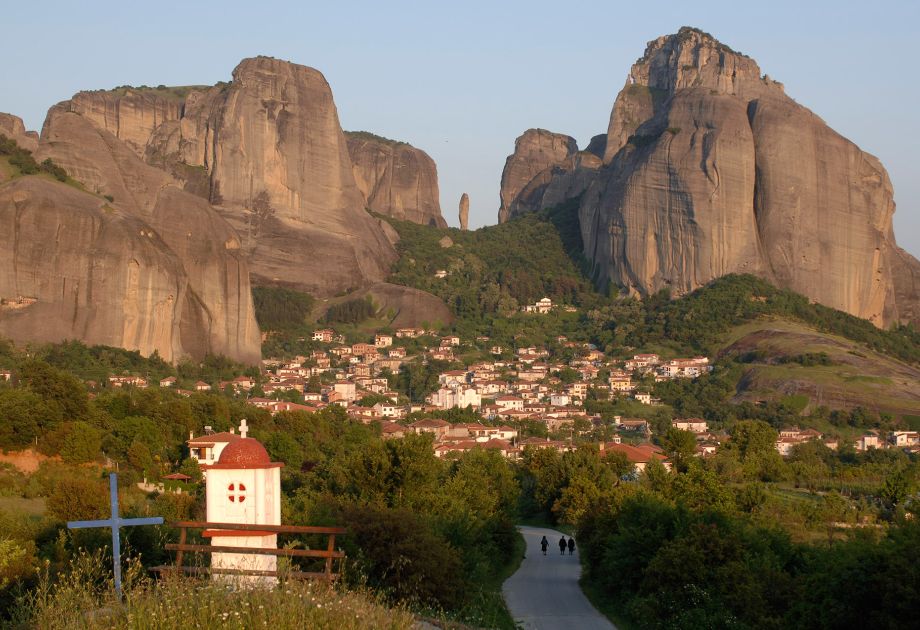
The creation of a unique geological phenomenon
Beside the Pindos Mountains, in the western region of Thessaly, these unique and enormous columns of rock rise precipitously from the ground. But their unusual form is not easy to explain geologically. They are not volcanic plugs of hard igneous rock typical elsewhere, but the rocks are composed of a mixture of sandstone and conglomerate.
The conglomerate was formed of deposits of stone, sand and mud from streams flowing into a delta at the edge of a lake, over millions of years. About 60 million years ago during the Paleogene period a series of earth movements pushed the seabed upwards, creating a high plateau and causing many vertical fault lines in the thick layer of sandstone.
The first people to inhabit Meteora, Greece, were hermit monks. They came from Mount Athos to seek peace and solitude. At first, they lived in caverns and rock-hewn dwellings in the cliffs.
In a region of almost inaccessible sandstone peaks, monks settled on these 'columns of the sky' from the 11th century onwards. Twenty-four of these monasteries were built, despite incredible difficulties, at the time of the great revival of the eremetic ideal in the 15th century. Their 16th-century frescoes mark a key stage in the development of post-Byzantine painting.
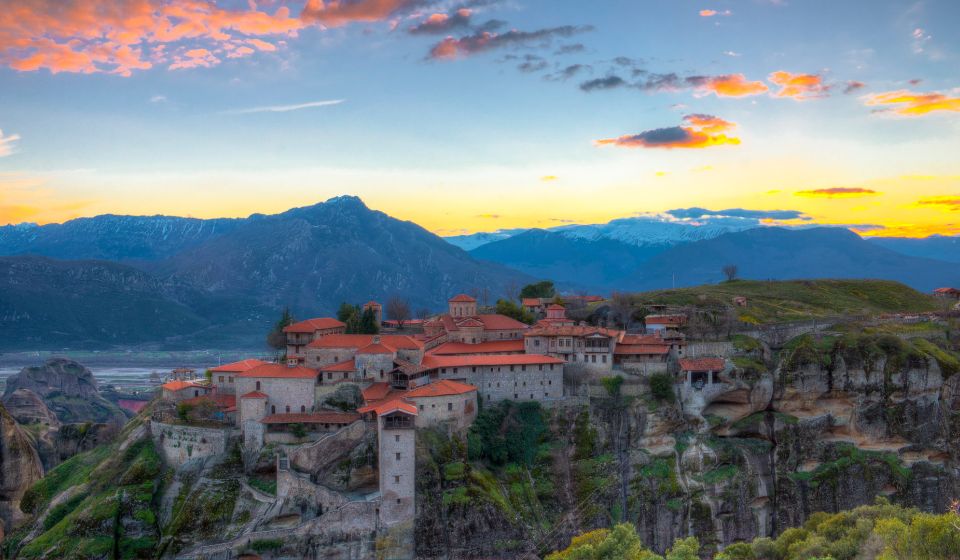
The Menostery of Great Meteoron
The Great Meteoron Monastery is the biggest and oldest one of all. It was called the monastery that was “suspended in the air” (meteoro), because of the formation of the gigantic rock on top of which it was built.
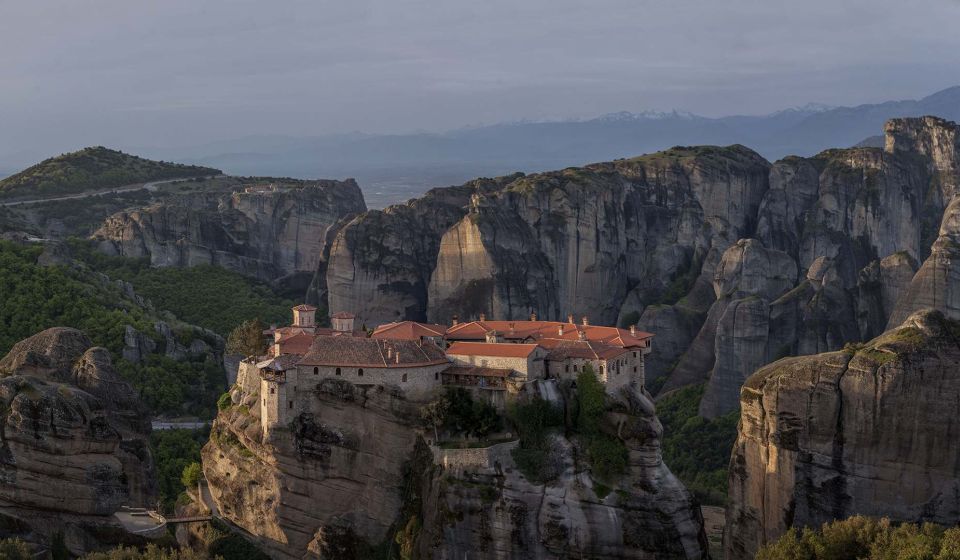
The Menostery of Varlam
The Holy Monastery of Varlaam is the second biggest monastery. It is located opposite of the Great Meteoro Monastery and it was founded in the mid 14th century by the exercitant Hosios Varlaam.
The elegant monastery Catholicon was built in the honour of Agioi Pantes in 1541-42, by two brothers from Ioannina,
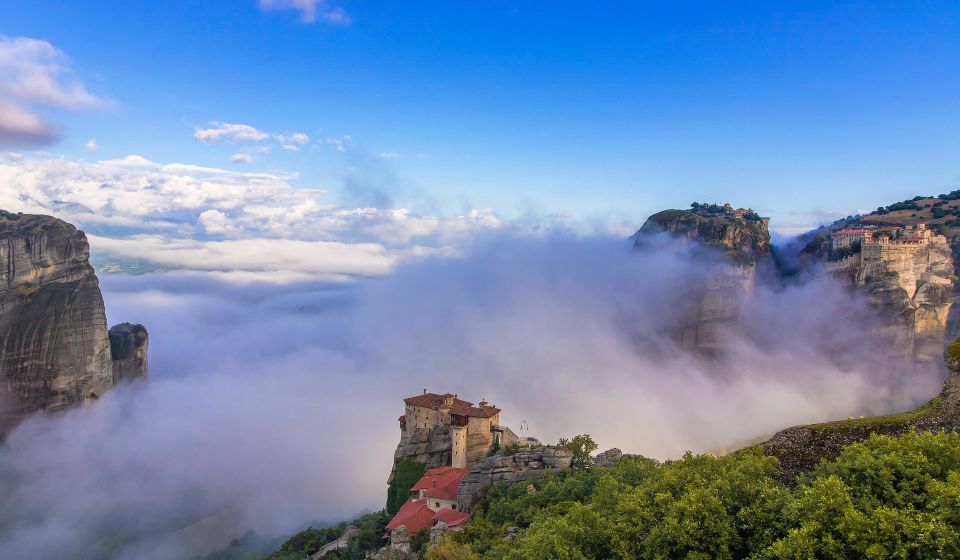
The Monastery of Roussanou
The Holy Monastery of Roussanou has received the name of the first probable hermit who settled on the rock. The main cathedral was founded at the end of the 16th century and was decorated thirty years later.
The beautiful wall-paintings of the Catholicon were executed in 1560, when the priest-monk Arsenios was the abbot of the monastery. The unknown hagiographer seems to have been a very skilful artist and successfully follows the Cretan School style.
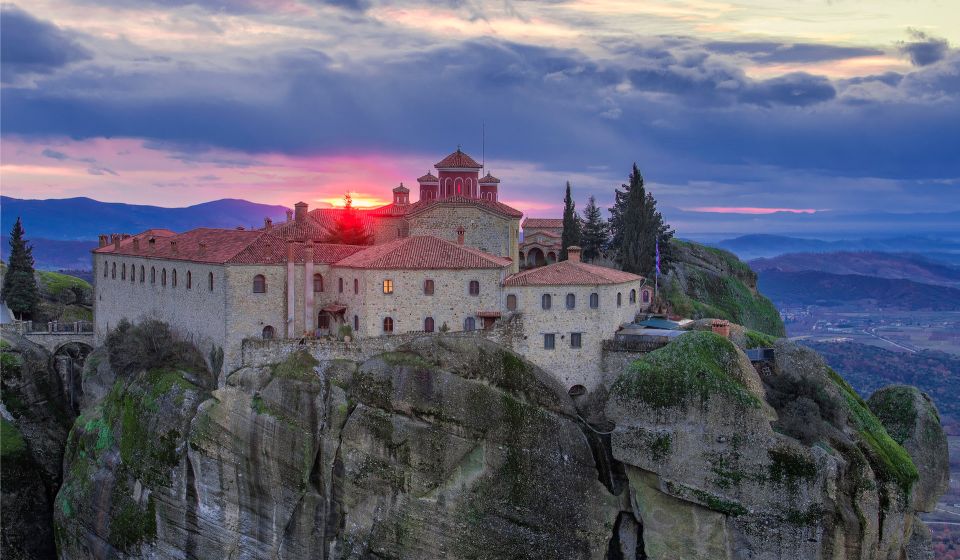
The St. Stephen's Monastery
This is the most accessible monastery, where instead of steps you simply cross a small bridge to reach the entrance. It is ideal for visitors who cannot use the steps and yet they wish to have a real experience of a Meteora monastery.
The beginning of monastic life on the rock of Agios Stephanos dates back to early in the 12th century. Hosios Antonios, in the first half of the 15th century, and Hosios Philotheos, who renovated or rather rebuilt from its foundations the old small and elegant Catholicon, the present church of Agios Stephanos, in 1545 are mentioned as its founders.
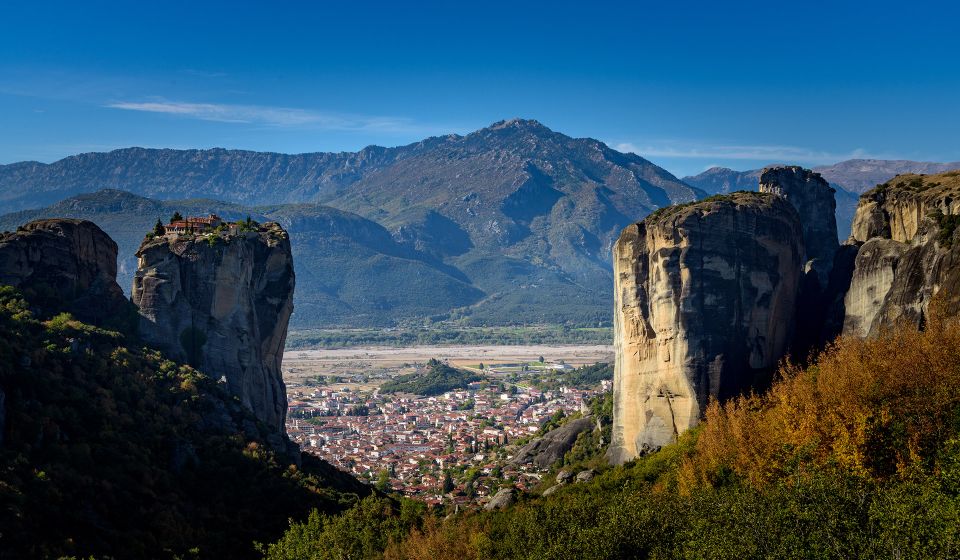
The Monastery of Holy Trinity
The Holy Trinity Monastery (Agia Triada) is the most difficult to reach, but once you get to the very top the panoramic view of the surroundings is simply captivating!
This Monastery is very close to the Saint Stephen’s Nunnery and it is perched on a steep and magnificent rock. It had already been organized Monastery since the year 1362 as indicated in a document by Symeon Uressis Palaeologos. Visitors have to follow a pathway that directs them initially to the foot of the rock, before they start walking up about 140 steps.
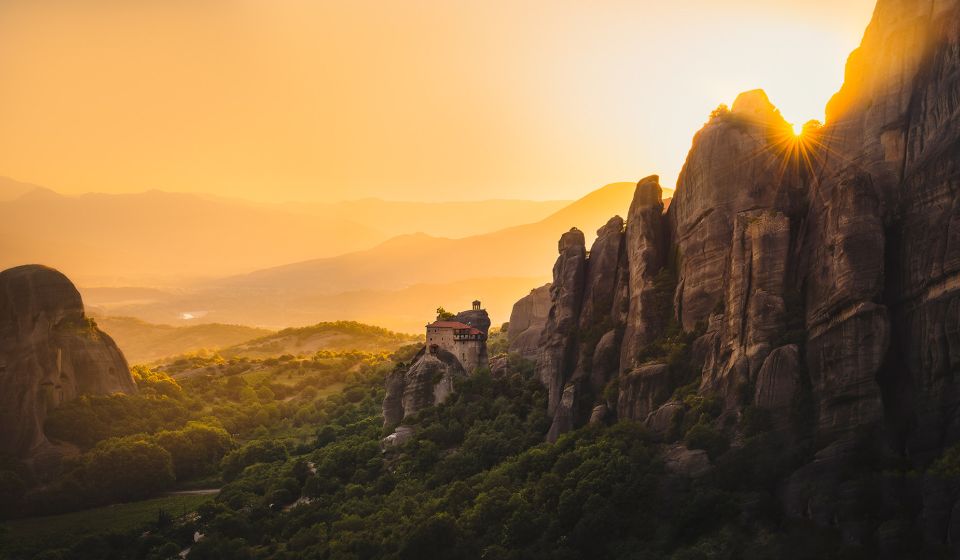
The Monastery of St. Nicholas of Anapafsas
The Holy Monastery of Saint Nicholas of Anapafsas is the first Monastery that we encounter on our way to the Holy Meteora and was founded at the end of the 14th century.
The limited surface of the rock forced the building of the monastery to be built vertically on floors, one level on top of the other. Access to all the different floors is achieved through an inbuilt staircase. At the entrance of the Monastery lies the Church of St. Anthony and the crypt where the codes and the monastery’s heirlooms were previously stored. On the walls, paintings of the 14th Century can be seen.



